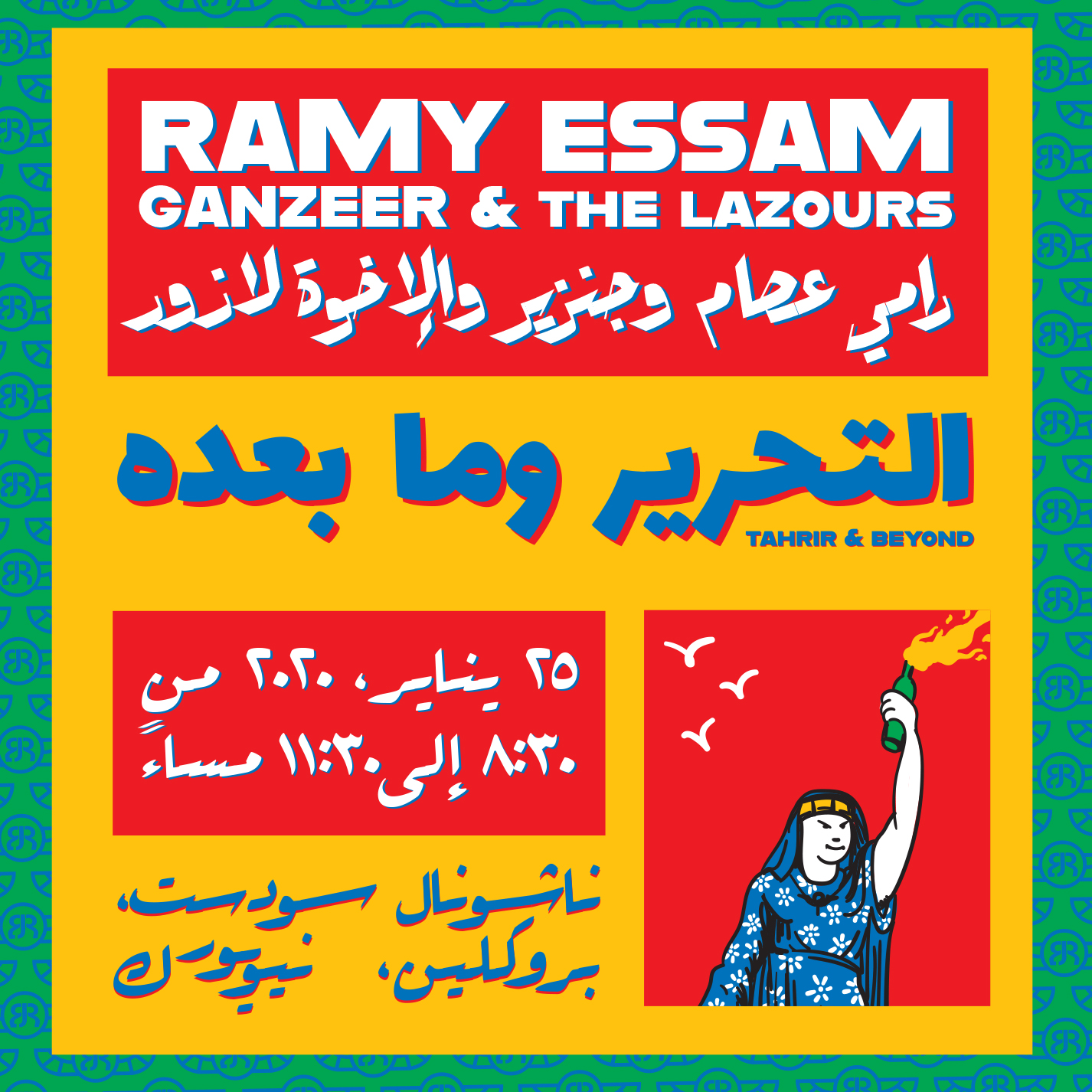Tahrir & Beyond
Graphics, Other
2020—01
Houston, TX + New York, NY
Houston, TX + New York, NY





Poster design for TAHRIR & BEYOND, an event headlined by Ramy Essam and joined by The Lazours and myself to commemorate the spirit of revolution ignited in Egypt nine years prior.
The design is inspired by the aesthetic of Egyptian folk art, and the featured figure is loosely based on Frederic Bartholdi’s original design for the Statue of Liberty. Dubbed “Egypt Carrying the Light to Asia, the project was conceived in 1860 and proposed to Egypt’s then ruler Khedeive Ismail Pasha for the city of Port Said in time for the inauguration of the Suez Canal, arguably the most important waterway of the era. The Khedeive, however, rejected it due to its expensive cost.
It wouldn’t be until 20 years later that Bartholdi modified the design (honestly only slightly) into “Liberty Enlightening the World” for the city of New York.
TAHRIR & BEYOND was held at National Sawdust in Brooklyn, NY. This New York/Egypt connection seemed like a good enough reason to draw inspiration from Batholdi’s original design, reappropriating it as a symbol of “what could’ve been”.
Variations of the design were made for use on various social media platforms, as well as a variety of printed matter.
The design is inspired by the aesthetic of Egyptian folk art, and the featured figure is loosely based on Frederic Bartholdi’s original design for the Statue of Liberty. Dubbed “Egypt Carrying the Light to Asia, the project was conceived in 1860 and proposed to Egypt’s then ruler Khedeive Ismail Pasha for the city of Port Said in time for the inauguration of the Suez Canal, arguably the most important waterway of the era. The Khedeive, however, rejected it due to its expensive cost.
It wouldn’t be until 20 years later that Bartholdi modified the design (honestly only slightly) into “Liberty Enlightening the World” for the city of New York.
TAHRIR & BEYOND was held at National Sawdust in Brooklyn, NY. This New York/Egypt connection seemed like a good enough reason to draw inspiration from Batholdi’s original design, reappropriating it as a symbol of “what could’ve been”.
Variations of the design were made for use on various social media platforms, as well as a variety of printed matter.
